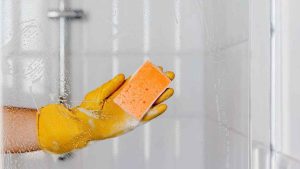Citristrip is a popular paint and finish stripper known for its effectiveness and relatively low toxicity compared to other chemical strippers. Whether you’re revitalizing an old piece of furniture or prepping a surface for a fresh coat of paint, Citristrip can be a valuable tool in your DIY arsenal. This guide will walk you through the process of safely and effectively using Citristrip on your wood projects.
Why Choose Citristrip?
- Less Harsh: Citristrip is formulated with citrus extracts, making it a less caustic option than traditional chemical strippers. It’s safer for indoor use and produces fewer fumes.
- Versatile: It works on various finishes, including latex and oil-based paints, varnish, lacquer, polyurethane, and shellac.
- Biodegradable: Citristrip is an environmentally friendly choice as it’s biodegradable and doesn’t contain harsh solvents like methylene chloride.
Materials You’ll Need
- Citristrip Paint & Varnish Stripping Gel
- Paintbrush or Disposable Chip Brush
- Rubber Gloves
- Safety Glasses
- Plastic Scraper
- Steel Wool (optional)
- Mineral Spirits (optional)
- Drop Cloths or Plastic Sheeting
- Rags or Paper Towels
- Ventilation (open windows or fans)
Related: Should You Repair Or Replace Wood Fences?
Step-by-Step Instructions
- Prepare Your Workspace: Cover your work area with drop cloths or plastic sheeting to protect it from spills. Ensure you have good ventilation to disperse any fumes. Put on your safety glasses and rubber gloves.
- Apply Citristrip: Using your paintbrush or chip brush, apply a thick, even layer of Citristrip to the wood surface. Work in one direction to avoid disturbing the finish as it softens.
- Let it Work: Allow the Citristrip to sit on the surface for the recommended time. The duration can vary depending on the type and thickness of the finish (usually 30 minutes to a few hours). You’ll notice the finish start to bubble and lift.
- Test an Area: Before scraping the entire surface, test a small, inconspicuous area. If the finish easily comes off with a scraper, you’re ready to proceed. If not, let the Citristrip sit for a little longer.
- Scrape Away the Finish: Gently scrape the softened finish using a plastic scraper. Hold the scraper at a low angle to avoid damaging the wood. For detailed areas or stubborn spots, use steel wool.
- Repeat if Necessary: For multiple layers of finish, you might need to apply Citristrip again and repeat the scraping process.
- Clean Up: After removing the finish, wipe down the surface with mineral spirits (optional) to remove any residue. Then, use rags or paper towels to thoroughly clean the area.
- Neutralize the Stripper: While Citristrip is less harsh than other strippers, it’s still a good practice to neutralize it. Mix a solution of equal parts water and white vinegar, and wipe down the wood surface. Let it dry completely.
- Dispose of Materials Safely: Check local regulations for proper disposal of Citristrip and other materials.
Important Tips
- Patch Test: Always test Citristrip on a hidden area before applying it to the entire piece.
- Protect Your Skin: Wear gloves and long sleeves to avoid skin irritation.
- Ventilation is Key: Work in a well-ventilated area or use a fan to circulate air.
- Patience is a Virtue: Allow the Citristrip ample time to work for best results.
When to Seek Professional Help
If you’re dealing with an antique, a delicate piece, or a particularly stubborn finish, consider seeking the help of a professional furniture restorer. They have the expertise and experience to handle these situations with care. For further insights, you might also want to check out the DJDChronology review on can you leave Citristrip on too long to understand the best practices and potential pitfalls when using stripping agents.
Conclusion
With the right preparation and technique, Citristrip can be an effective and user-friendly tool for stripping paint and finishes from your wood projects. By following these guidelines and prioritizing safety, you’ll be well on your way to giving new life to your furniture and other wooden treasures.





Average Rating